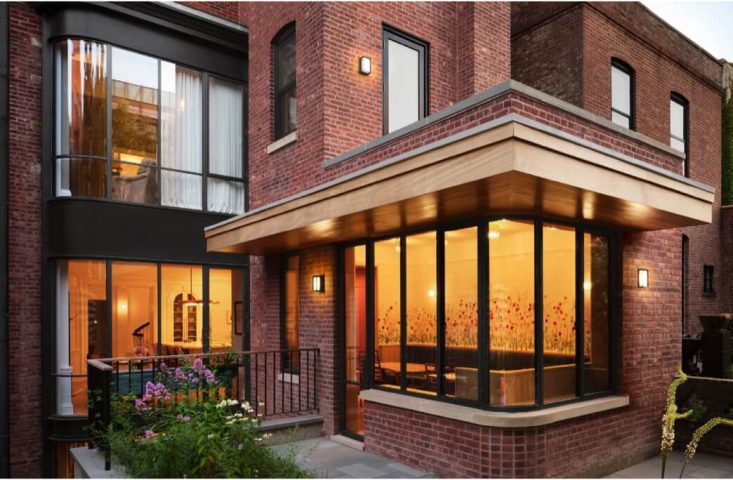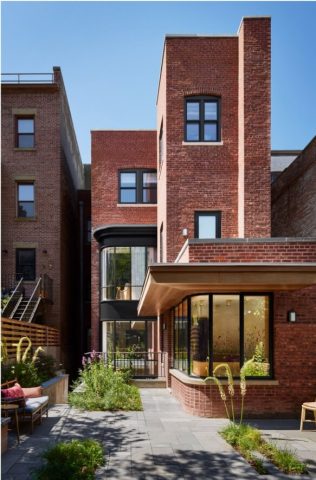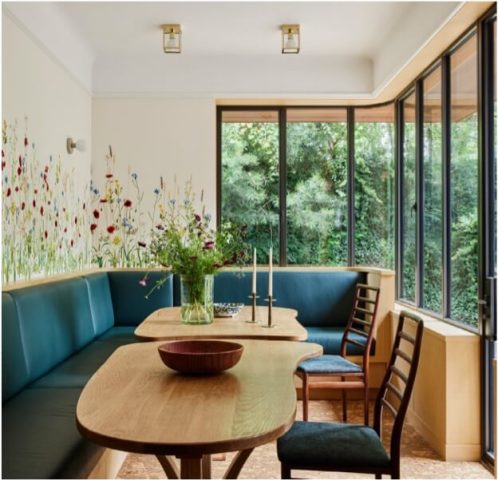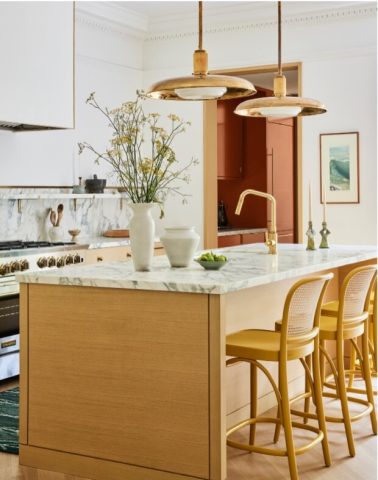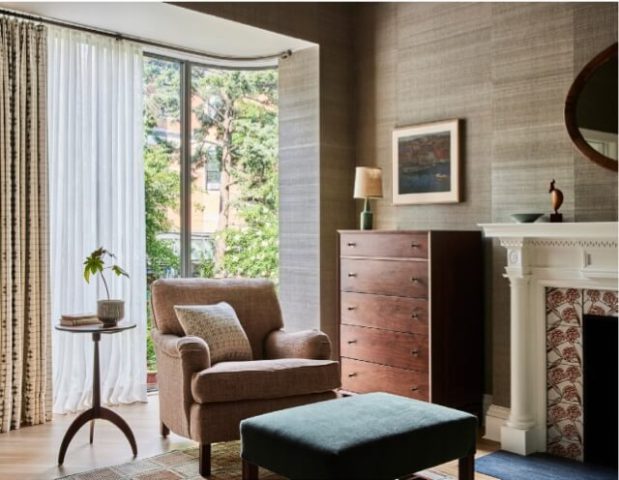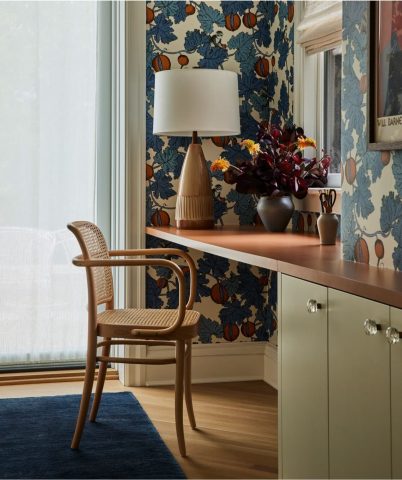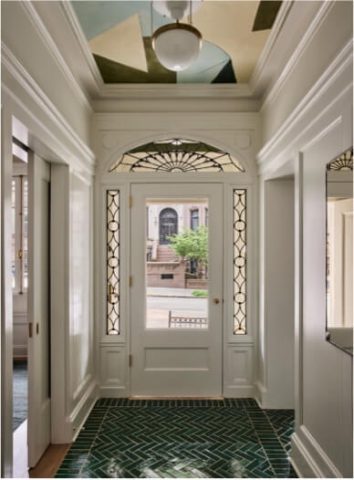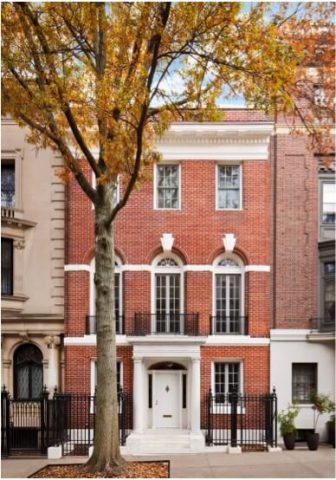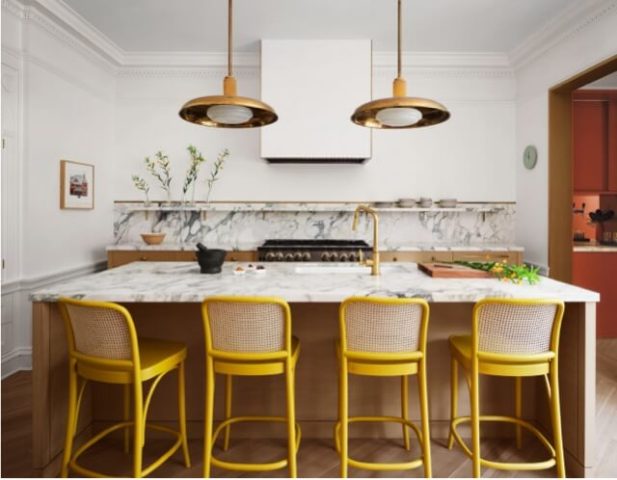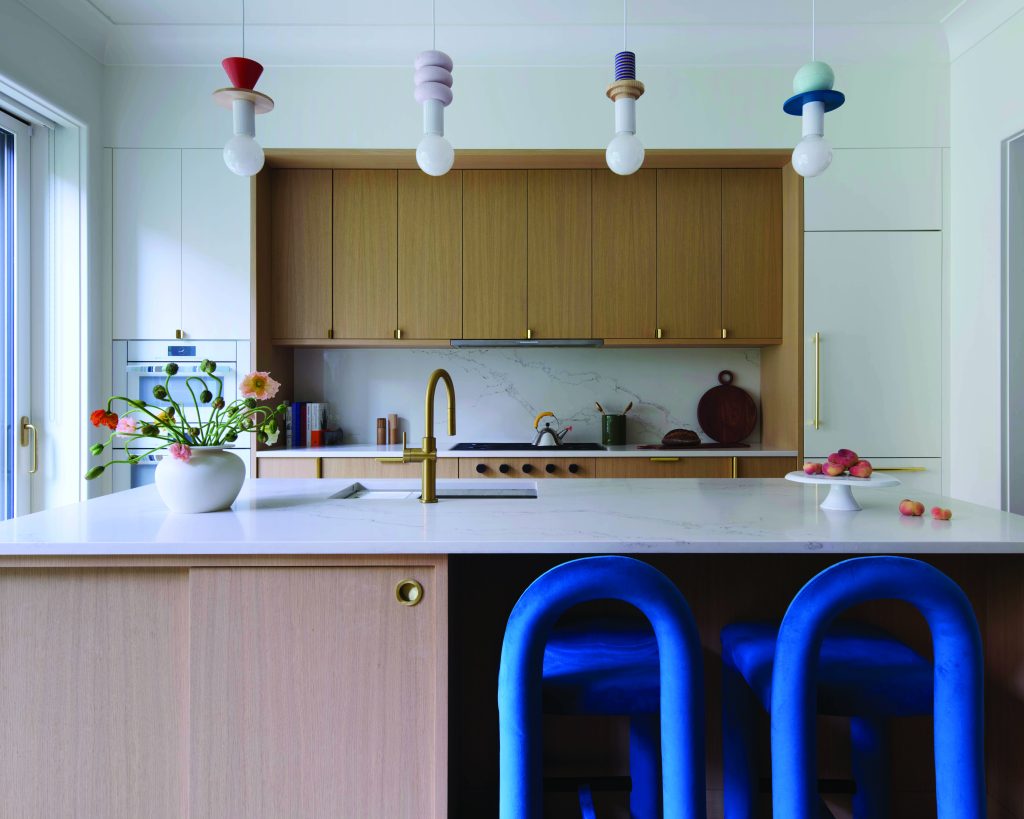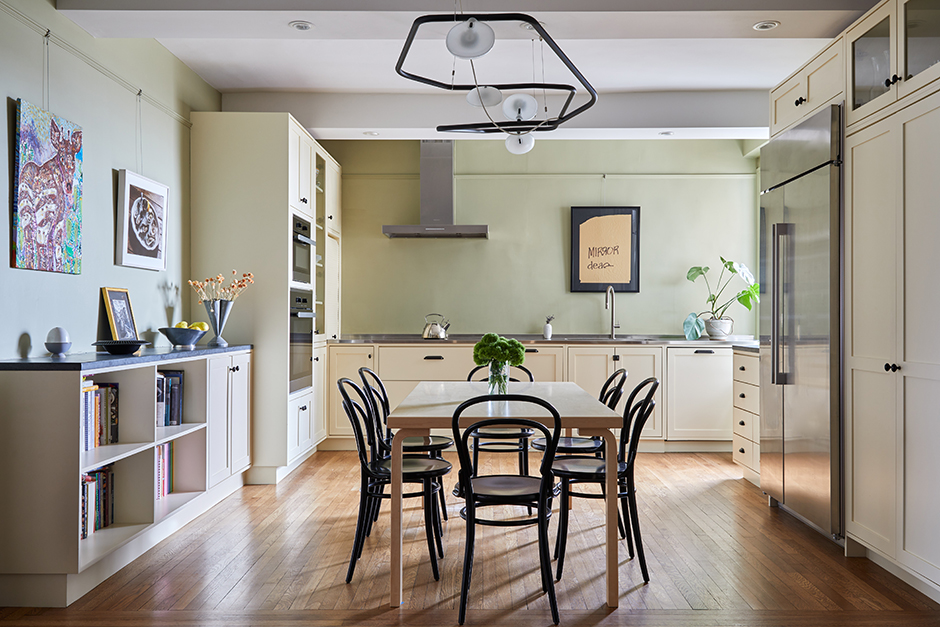This three-story, 5280-square-foot Neo-Federal rowhouse is located in Brooklyn’s Park Slope Historic District. It was built circa 1910. Our challenge was to preserve the architectural and historic integrity of this home while updating it for modern use. Our most significant intervention was the relocation of the kitchen. Originally, the kitchen was housed in the rear extension, closed off from the rest of the house. We swapped the location of the kitchen and the dining room—a simple move that helped reorient the building’s entire center of gravity. The new dining room is housed in a long, narrow space. To create a feeling of openness, we added large, curved windows, which were inspired by the observation windows found on early twentieth-century passenger trains. We then applied this design language to the remainder of the rear façade. We rehabilitated the interior of the entire home. We restored the stoop and vestibule, repointed the masonry, restored the cornice, and installed modern windows in the original masonry openings. As one moves through the home, the design transitions from classical to contemporary. The result is a building that reflects the nature of architecture itself: a conversation across time, transcending generations and sensibilities.
Design For Equitable Communities
Per New York City’s Landmarks law, when rehabilitating a building in an historic district, the front façade must retain its original appearance. Modifications to the rear façade must be sensitive and contextually appropriate, and are subject to the approval of local community boards and the Landmarks Preservation Commission. We restored the historical and aesthetic integrity of this street wall adjacent to Prospect Park in the Park Slope Historic District. One of our millwork installations at the front of the home contains storage for our client’s e-bike. The millwork incorporates a concealed charging station and mount for the e-bike. This integrated transportation strategy favors humanpowered mobility, decreases dependence on cars, and connects people to place.


